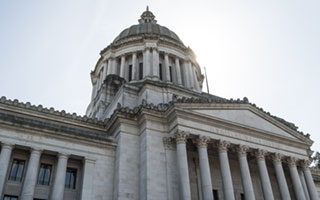 The Federal Reserve has a complicated task ahead. Moving the economy forward while slowing inflation but not going so far as to stall the economy outright. Like trying to sink a 30-foot putt while taking the curves and elevation changes of the green into account, the Fed has to navigate through inflation at a 40-year high, the war in Ukraine, increasing wages, supply chain disruptions, and more. It’s all a bit tricky.
The Federal Reserve has a complicated task ahead. Moving the economy forward while slowing inflation but not going so far as to stall the economy outright. Like trying to sink a 30-foot putt while taking the curves and elevation changes of the green into account, the Fed has to navigate through inflation at a 40-year high, the war in Ukraine, increasing wages, supply chain disruptions, and more. It’s all a bit tricky.
The Feds are challenged to balance how far to tame inflation with rate hikes, increasing borrowing costs for consumers seeking to access credit to buy homes and cars – with the impact of higher prices potentially shaking consumer confidence and radically slowing spending.
Increased mortgage rates offset by steep drops in the stock market and cryptocurrencies have made many consumers skittish. For the first time in well over a year, there are signs the housing market is finally cooling off, with sales of existing home sales falling 2.4% in April to their lowest level in almost two years. Are things about to get worse? Not likely, according to NRF Chief Economist Jack Kleinhenz. In the Great Recession, debt was high. Today, Americans are “flush with cash,” but their spending has been a bit erratic. All of this can make retailers nervous, affecting their planning for the year ahead.
“Though many people fear an extreme cooling off of the economy, there is not an overwhelming amount of evidence to support such prediction,” said Kleinhenz. “In general, the data suggests that we remain in an ongoing expansion.”
The news isn’t dire. Growth in employment, wages, and consumer spending are all remaining steady.
According to the WalletHub report released Monday, a recession may arrive, but for now Washington’s economy is white hot. Washington state topped the charts in several categories that include highest export value per capital – more than $7,000 – near 6% increase in the number of nonfarm payrolls, and a 4% rise in the labor force. The economy increased by 12,300 jobs in April, while the unemployment rate decreased to 4.1%. Over 8% of the state’s jobs are in high-tech industries and more than 10% of jobs are STEM.
Nationally, 428,000 jobs were added in April, over the 400,000 mark for the 12th month in a row. Retail sales continue on an upward trajectory too.
“Never bet against the U.S. consumer has always been a good adage,” said Paul Ashworth, chief U.S. economist at Capital Economics, a consulting firm, in a note to his clients. “Despite the surge in prices weighing on their purchasing power, the U.S. consumer now appears to be single-handedly keeping the global economy afloat.”





